OSLO — It was a July afternoon in 2011 when a car bomb exploded just a few blocks from Robert Ullmann’s office. Because it was the summer, only two employees from Kanvas, his nonprofit that manages 64 child care programs around Norway, were at their desks on the third floor of a narrow, nondescript building in central Oslo. Although the floor-to-ceiling glass windows shattered when the bomb exploded at 3:25 in the afternoon, both members of his team were unhurt.

When I arrived at Ullmann’s office a few months ago to interview him about Kanvas, he led me to one of the windows that looks out over Møllergata street. Just past the rusty roof of the building across the road, we could see the top of Regjeringskvartalet, a cluster of government offices, the target of that car bomb. “That’s our ‘Capitol Hill,’” Ullmann explained. The complex never reopened after the blast, which killed eight and injured more than 200. A few hours later, the far-right extremist behind the bombing opened fire at a youth summer camp on an island 24 miles from central Oslo, killing 69 people, most of them teenagers and young adults affiliated with the youth wing of the country’s Labor Party.
The violent attack, extraordinarily rare for Norway, affected Ullmann deeply.
“I started some reflection,” he said as we stood by the window. “How can a young guy come up here and become a terrorist?” In the context of his work with young children, the goal became very clear. “What’s important is that everyone feel they’re included,” he said.
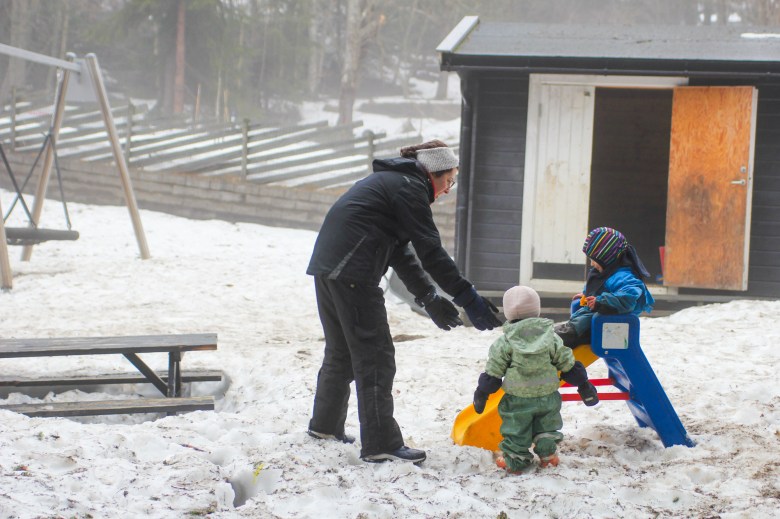
Ullmann’s conclusion embodies one of Norway’s goals for its citizens: to build a nation of thriving adults by providing childhoods that are joyful, secure and inclusive. Perhaps nowhere is this belief manifested more clearly than in the nation’s approach to early child care. (In Norway, all education for children 5 and under is referred to as “barnehagen,” the local translation of “kindergarten.”) To an American, the Norwegian philosophy, both in policy and in practice, could feel alien. The government’s view isn’t that child care is a place to put children so parents can work, or even to prepare children for the rigors of elementary school. It’s about protecting childhood.
“A really important pillar of Norway’s early ed philosophy is the value of childhood in itself,” said Henrik D. Zachrisson, a professor at the Centre for Research on Equality in Education at the University of Oslo. “Early ed is supposed to be a place where children can be children and have the best childhood possible.”
Related: Our biweekly Early Childhood newsletter highlights innovative solutions to the obstacles facing the youngest students. Subscribe for free.
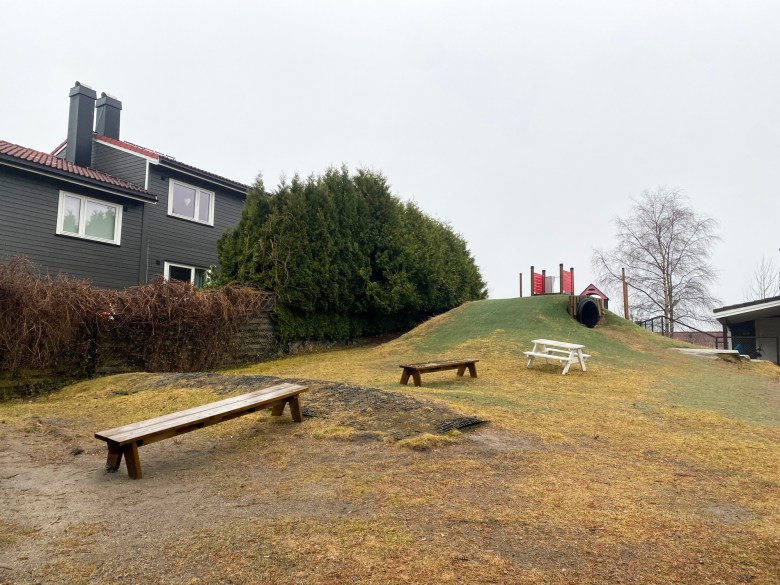
On a drizzly Thursday morning this spring in south Oslo, at Preståsen Kanvas-barnehage, one of Kanvas’ child care programs, children roamed around an expansive play yard, building sandcastles under a large evergreen tree and zooming down a hill on bikes. On an adjacent playground, children shrieked as they splashed through a large puddle. As more children were drawn to the water, rather than caution them about getting wet, a teacher handed them buckets to have at it.
There was a clear focus on inclusion: Children with disabilities, who would often be segregated in American child care programs, were included in activities, at times with the help of a city-funded aide. Posters on some kindergarten walls showed pictures of common items or requests so children who were still learning to speak Norwegian could point to what they needed. Children were learning about the Muslim holiday Eid al-Fitr. A rack of free clothes and boots was parked inside the front lobby, with instructions for parents to take what they needed.
“Kindergarten is so important to level out social inequities,” said Ullmann as we drove to a second site run by Kanvas. “In Norway, we think it’s democratic that everyone can have the same opportunities and move out of being poor. Social differences are something Norway does not accept.”
I traveled to Norway in April, disillusioned after nine years of reporting on child care in the U.S., where parents often pay exorbitant sums for care that comes with no guarantee of quality and relies on underpaid workers. I was eager to see a country that prioritizes child care and generously subsidizes that system, two things that feel wholly out of reach in the United States.
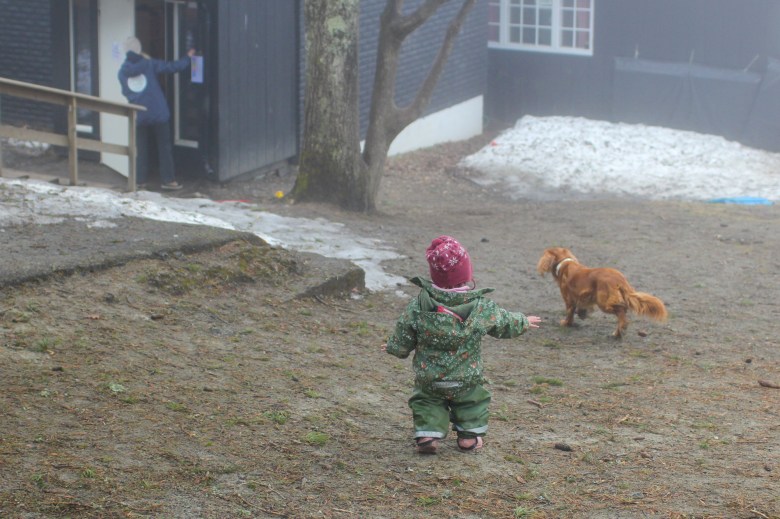
Norway’s model comes from a deep-seated belief that creating productive, contributing members of society starts at birth. The country offers robust social support for residents, making occurrences like the 2011 attacks that much more shocking. Investing in early childhood is seen “both as an investment for the society and an investment for the child,” said Kristin Aasta Morken, program leader of the city of Oslo’s initiative for upbringing and education. Unlike in America, no attempts have been made to lower age requirements for kindergarten teachers or increase student-teacher ratios and group sizes, and there have been few debates over whether child care is ruining children or families. Ironically, Norway’s policies have been inspired in part by American studies that found language gaps between higher- and lower-income children, as well as a high return on investment for early childhood programs.
“The argument I’ve heard is that if you don’t send your children to kindergarten, then you steal some possible experiences from them,” said Adrian Kristinsønn Jacobsen, a doctoral candidate at Norway’s University of Stavanger who studies nature-based early childhood science education and is a parent of two young children. “You sort of don’t give them the chance to play with other children so much, for instance, or get to know other adults.”
At a time when the U.S. has yet to meaningfully invest in widespread, high-quality child care for all, especially for infants and toddlers — and federal child care spending, provided to states through block grants, reaches only 13 percent of eligible American children — Norway provides an example of what affordable, universal, child-centric early care can look like.

To be sure, there are important contexts behind each country’s approach. Norway, a democracy with a figurehead monarchy, is home to about 5.5 million people, about 82 percent of whom are of Norwegian ancestry, across a space roughly the size of Montana. The U.S. has 62 times the number of residents and a far more diverse population. Norway is a top producer of oil which helped generate a per capita household income that was over $104,000 in 2022, according to the International Monetary Fund. In 2022, per capita household income in the U.S. was about $77,000.
The countries’ priorities are different as well. Each year, nearly 1.4 percent of Norway’s GDP is spent on early childhood programs, compared with less than 0.4 percent in America. Public funding covers 85 percent of operating costs for child care programs. The tuition parents pay has been capped at 2,000 kroner (about $190) a month for the first child, with a 30 percent discount for the second. Tuition for a third child is free. This applies to both public and private programs, including in-home centers, giving parents some choice. Programs receive funding based on the number of children served, with sites drawing double the amount of money for each child under 3 to account for lower student-teacher ratios.
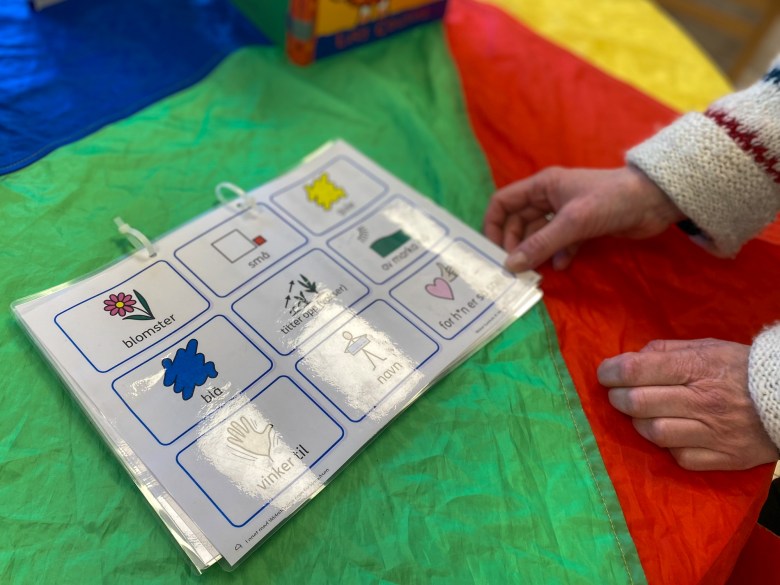
Norwegian children are guaranteed a spot in a kindergarten after they turn 1, around the time many parents’ paid leave ends. All kindergartens are governed by the same framework and requirements, designed to protect the sanctity of the early years. If parents don’t send their children to child care, they receive financial assistance to keep them at home.
Norwegians are so serious about the right to child-centric early care, they wrote it into law. The country’s Kindergarten Act, which took effect in 2006, states that child care programs must acknowledge “the intrinsic value” of childhood. Programs must be rooted in values including forgiveness, equality, solidarity and respect for human worth. Through kindergartens, children are meant to learn to take care of each other and develop friendships. Programs are ordered to respect children, “counteract all forms of discrimination” and contribute to a child’s well-being and joy. They must be designed around the interests of children and provide activities that allow children to develop their “creative zest, sense of wonder and need to investigate.”
That doesn’t mean kids run free all day, though at times it can look like that. “If you’re standing outside a Norwegian kindergarten or just passing through, I would think you are looking at chaos,” said Anne Karin Frivik, head of kindergartens in the Bjerke borough of north Oslo. “But for us on the inside, it’s organized chaos. The autonomy of the child, the child’s own ability to choose and to learn and to interact, it’s very, very highly appreciated.”
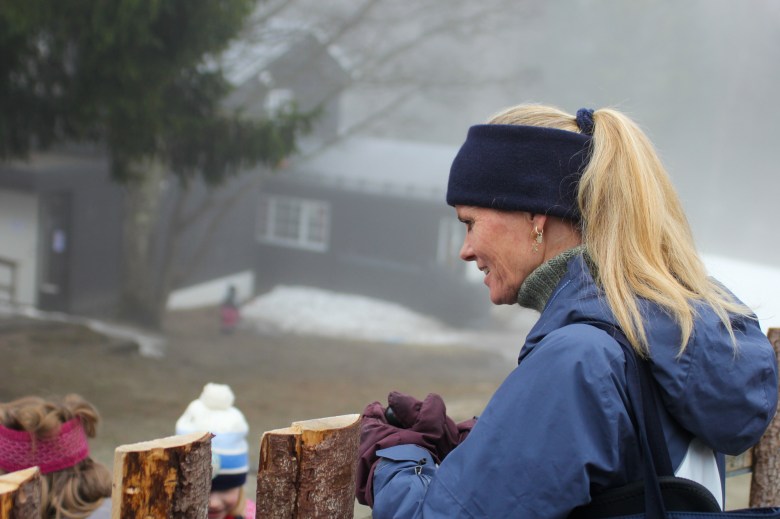
About 7 miles north of Oslo, Sylvia Lorentzen’s two child care programs straddle a narrow, winding road amid the lush forests that encircle part of the city, offering limitless opportunities for children to immerse themselves in nature. Throughout the year, those in Lorentzen’s care ski, sled, swim, canoe, climb rocks and rest in hammocks. Around age 4, they learn how to safely use a knife. Then they huddle together outside, whittling wooden figures out of sticks to practice. At 5, they are cutting logs with a saw and building fires.
By 11 on a Tuesday morning this spring, it was barely above freezing, but toddlers at one of Lorentzen’s programs, Turi Sletners Barnehave, had yet to set foot inside. Bundled up in colorful snowsuits and boots, they crunched through several inches of snow blanketing their picturesque play yard, splashed through muddy puddles and giggled as they chased Lorentzen’s petite, playful dog around the yard.
“Children should feel more like it’s a second home,” said Lorentzen. “We take the kids into our heart and we take good care of them.”
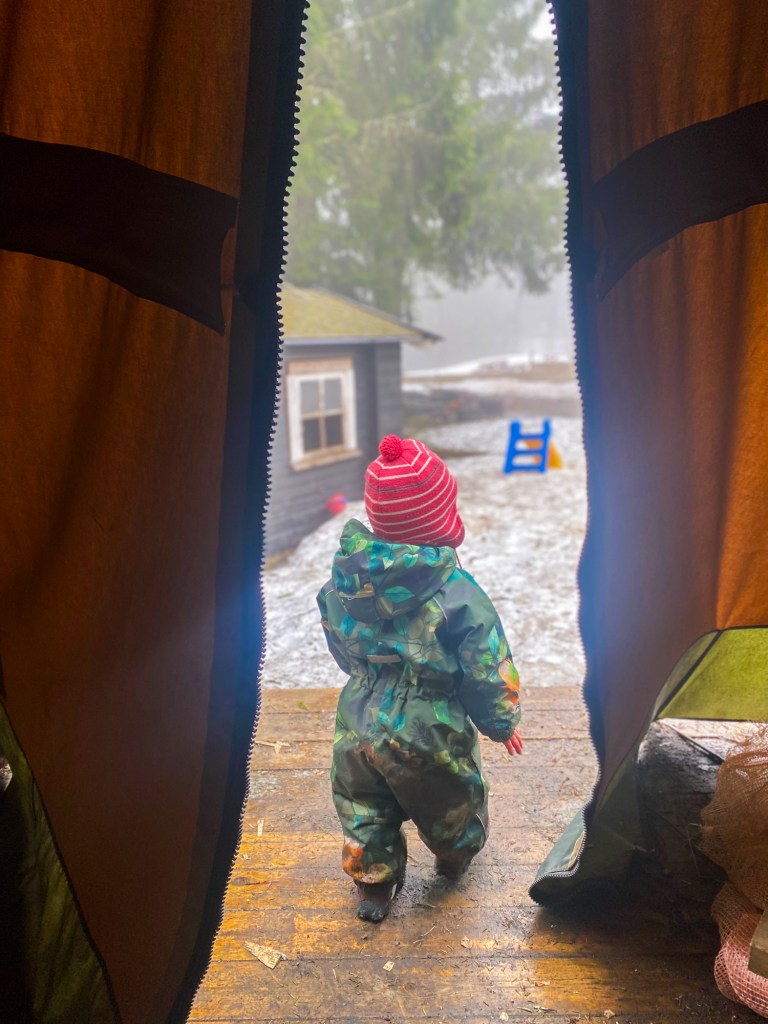
As the morning wore on, the five toddlers made their way up a gentle slope and stepped inside a large tent, modeled after one commonly used by the Indigenous Sami people of Northern Europe. There, the children crowded around a metal firepit and peered at the remnants of their last bonfire.
“What did you find?” their teacher, Paula García Tadeo, asked in Norwegian as a child held up some charcoal remnants. García looked closely and nodded, before instructing the child to put it back.
Another child reached into the remnants and started to taste an ashy piece of wood.
“Don’t eat it,” Garcia said calmly.
“In the kindergarten in Norway, the children find their own food!” Lorentzen joked to me, laughing. “Don’t write that!”
After a bit more exploring and singing some nursery rhymes, the toddlers set off across the play yard. Some wandered over to watch a rushing stream a few feet away, and others stumbled through the snow before sitting down to rest. The more confident walkers among them marched ahead, toward the warm meal that awaited them inside.
For Lorentzen and many other early educators here, this sort of laid-back morning, marked by child-led outdoor exploration, signifies how childhood and child care should look. Nature and outdoor play are staples of Norwegian culture. There’s even a word for it: “friluftsliv,” which translates to “outdoor life.” Norwegians are so protective of this outdoor time, they have a saying, “There is no bad weather, just bad clothes.” It’s standard for Norwegian kindergartens to have rows of cubbies just inside the door to the play area to store layers of spare clothes, rain and snow gear, boots and mittens.
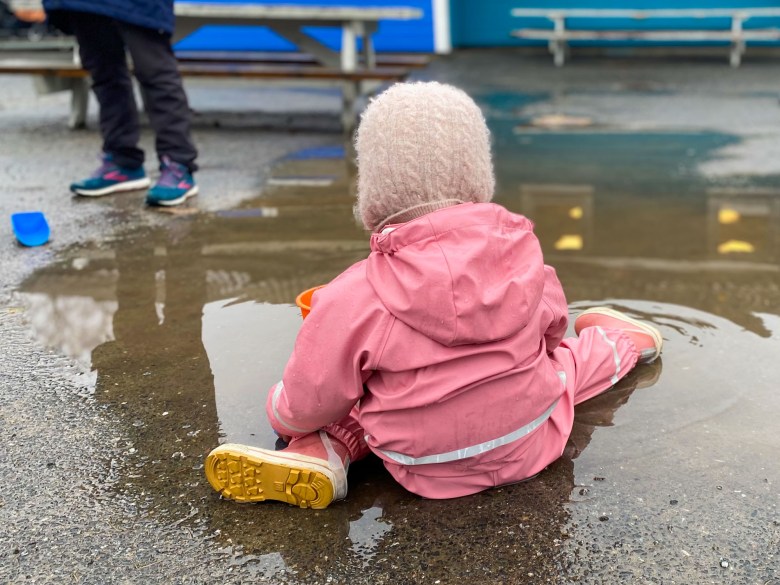
Some of this outdoor focus is baked into the country’s 63-page kindergarten framework, based on the national law, which dictates the content that must be covered, staff responsibilities and kindergartens’ general goals. The framework focuses heavily on play, a word that is repeated 56 times in the English version of the document. Programs are required to facilitate a good childhood, with “well-being, friendships and play.” Learning about nature and the environment is one of the framework’s seven learning goals for children, and programs are instructed to “use nature as an arena for play.” Much of the other content, like health and movement, communication and art, is taught while children are playing, either inside chaotic-looking classrooms or while traipsing through forests.
In rain, snow or wind, children at Turi Sletners, and in programs across the country, spend their days climbing trees and getting muddy. Toddlers nap outside, bundled inside puffy, miniature sleeping bags affixed to their strollers. During the summer, Norwegian children in kindergartens spend, on average, 70 percent of their time outside. In winter about a third of the time is outside. The country’s embrace of nature is likely a factor in its high international happiness ratings, given that research has found spending time in nature can decrease anxiety and improve cognition.
Researchers have found that Norway’s kindergartens have positive effects on academic success and the adult labor force. “Putting all the pieces together, it’s a pretty consistent set of evidence that there are fairly long-term effects” of Norway’s early childhood programs, said the University of Oslo’s Zachrisson. “Which is funny, because what they do the first year is walking around in the woods eating sand and hugging trees, and [it] is super interesting to try to think of what causes them to do much better on the math test in fifth grade.”
It may be because play is the main way children learn, and Norwegian kindergarten days are overflowing with just that.
Related: What America can learn from Canada’s new ‘$10 a Day’ child care system
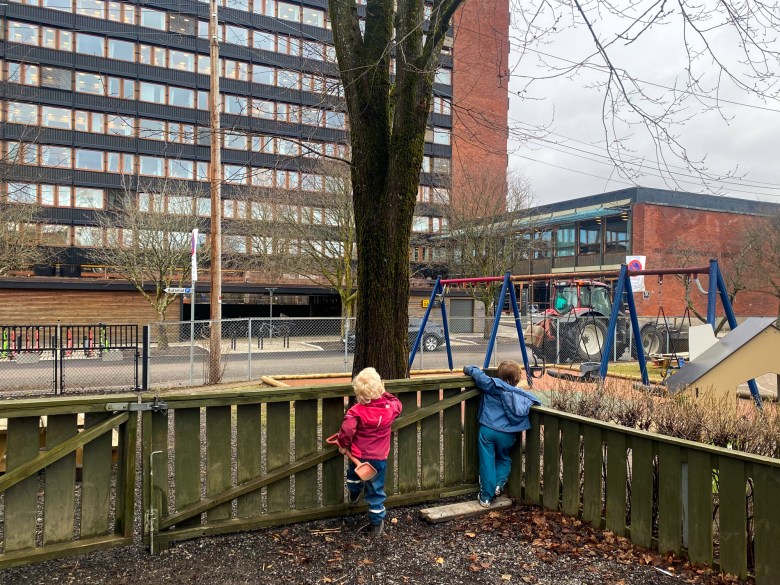
At Blindern Barnestuer, a child care program run out of four wooden houses across the street from the University of Oslo, children roam for hours, playing in a magical, expansive play yard while their parents research and teach at the university. On an April afternoon, a group of children crowded around a teacher sitting at a bench outside as he painted various insects on their faces on request.
Other kids chased each other up gentle hills as a nearby pirate flag, suspended from the branches of a knobby tree, waved. A group of preschoolers traversed an obstacle course constructed of wooden pallets and boards, clutching each other’s coats for stability. Some climbed trees and dangled from branches.
As Anne Gro Stumberg, one of the kindergarten’s lead teachers, known as a “pedagogical leader” in Norway, showed me around the outdoor play space, I commented on how Norwegians seemed to have a much higher risk tolerance for children’s play. In addition to the fire and knives that I had seen at other programs, preschoolers chased each other with brooms, fell several feet from tree limbs and stood on swings, things that gave me, a cautious American, pause. Nary a Norwegian looking on, however, batted an eye.
“We allow them to experience, and if they fall down, so what?” Stumberg said.
I asked if she’s had many injuries among the children.
She thought for a moment. “I can’t remember having one injury, not a serious injury,” she said.
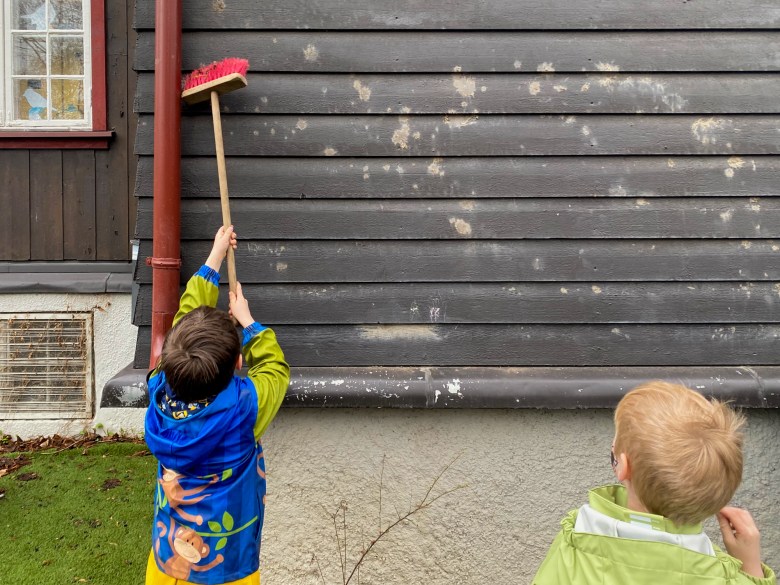
Stumberg sees endless lessons for children through play. At Blindern, teachers purposefully avoid teaching formal academics, like letters and numbers, unless a child is expressly interested in them. “We think that’s what they’re going to learn in school,” she said. “I don’t think it’s necessary to try to learn [reading] before school. There are so many other things that are very important, like all of the social skills, and how to move and do things on your own and to be able to have your own limits.”
This can only happen, Norway believes, with trained, qualified staff. The national framework instructs staff to behave as “role models,” and Norway’s law is strict about student-teacher ratios and qualifications. Programs are required to have one pedagogical leader, someone with a multiyear college degree or comparable education, per seven children under the age of 3, and one per 14 children older than that. Each leader is supported by two other teachers, who often have less education. For children under age 3, there may be no more than three children for each staff member, and there is a maximum of six children per staff for older children. In America, by contrast, no state has a ratio that low for toddlers. In some states, as many as 12 2-year-olds are assigned to one teacher, who is subject to far fewer training requirements than a peer in Norway.
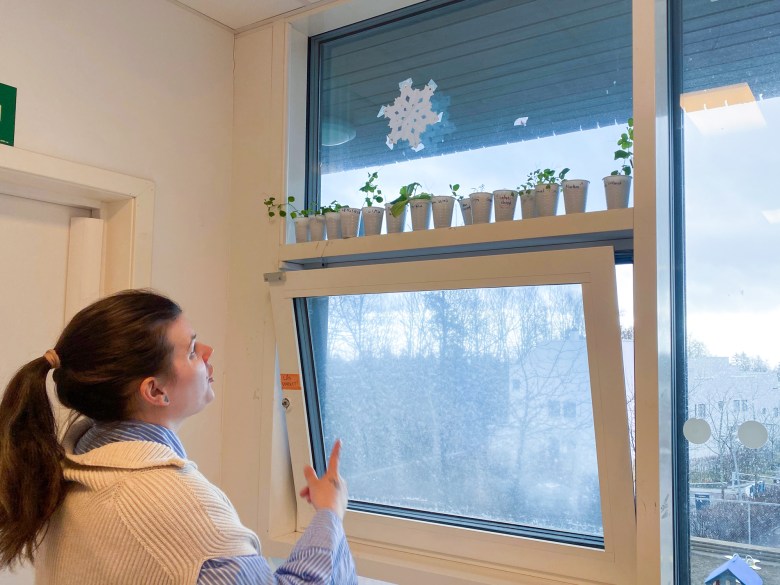
At Jarbakken Barnehage, in northwest Oslo, director Mailinn Daljord said qualified teachers are vital, as they have a challenging job. One of the most critical lessons is teaching children emotional regulation, a skill that is imperative as children grow. “I want [children] to like being in kindergarten,” she said, as we sat in her office, surrounded by rows of early childhood pedagogy books and a pile of donated, toddler-sized skis. “But I also want them to feel disappointment, sadness and disagreement with others, because here we have grownups that will help them with their emotions, so they will learn to handle those situations on their own when they get older.”
Like Ullmann, one thing Daljord does not want children to experience is bullying or exclusion. As we spoke, she went on her computer to pull up Jarbakken’s annual plan, something every kindergarten must create to explain how it will meet the requirements of the law. This year, Daljord is especially focused on interactions and inclusion. Teachers gather small groups of children during play to provide support with interactions and give them ample opportunity to form connections with peers. During the year, Daljord’s teachers meet to evaluate how much they interact with individual children, a practice Ullmann spoke of as well. Daljord uses a scale: Green means frequent interaction with a child, yellow occasional, red infrequent. Then the kindergarten zeroes in on those getting less interaction. Often, those are the most challenging children, Daljord said.
“You need to do something to make sure all the kids are getting the same, and that they are seen and acknowledged for the person they are,” she said.
Later in our visit, as Daljord walked me through the bright kindergarten, housed in a boxy, modern building surrounded by outdoor play spaces, I was struck by the freedom children had. They could move from room to room and play with other groups of children, as long as they stayed in the area designated for their age group. As we toured, Daljord pointed out what children were learning about: dinosaurs, insects and the life cycle of plants. All around us, children scurried in and out of play areas — the word “classroom” is not used in Norwegian child care settings — laughing and chasing friends. While teachers engaged small groups of children in spontaneous activity at times, for the most part, the emphasis was on child-led play.
Daljord agreed that children in Norway have “way more” freedom — and responsibility — than in America. She told me a story that, to her, demonstrated the former. Nearly a decade ago, while visiting a park in the United States with her then almost 3-year-old daughter, she was approached by an American parent who chastised her for sitting on a bench while her daughter ran free. “Child abuse,” Daljord recalled the woman telling her. She said Daljord “needed to watch her, and stay close.”
Daljord seemed amused by the whole interaction. “Different culture,” she said, as she recalled the story.
Related: Free child care exists in America — if you cross paths with the right philanthropist
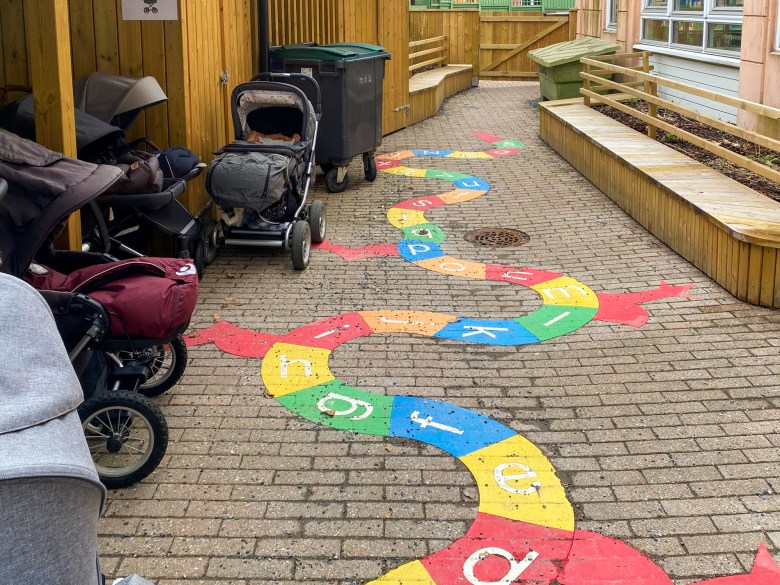
Norway’s early childhood policies are indeed part of a distinctly different culture. In 2020, UNICEF ranked Norway No. 1 among 41 Organization for Economic Cooperation and Development and European Union countries for conditions that support child well-being. Norway spends 3.3 percent of its GDP on family benefits, one of the highest rates among OECD nations, and about three times what the United States spends. In 2020, the medical journal The Lancet ranked Norway first out of 180 countries in a “child flourishing index.” That same year, UNICEF ranked Norway third among 41 wealthy countries in child well-being, as measured by mental well-being, physical health and academic and social skills. The United States, by comparison, ranked 36th. Norway also ranks highly in work-life balance, meaning even if children attend kindergarten, parents still spend hours with them each day, parents and educators told me.
Perhaps in part thanks to these circumstances, children and their families fare well in Norway. Child mortality and poverty rates in Norway are low, and most children report good family relationships. International test scores from before the pandemic showed Norwegian teenagers performing at or above international averages in science, math and reading, though scores have fluctuated over recent years, with the arrival of more immigrants, who tend to score lower on such tests. Nearly 86 percent of Norwegians graduate from high school, and 55 percent earn a college degree. College tuition is free for Norwegian and European Union residents at the country’s public universities.
Many of the Norwegians I interviewed spoke of a strong cultural expectation that adults contribute to Norway’s economy. More than 72 percent of the country’s labor force works, 10 percentage points higher than in America. Norway’s child care policy has supported this.
Many of Norway’s values are uniquely Scandinavian and deep-rooted. But as my visit went on, I began to wonder if part of Norway’s no-nonsense, easy-breezy approach was because many of the things that keep American parents up at night, like school shootings, mass shootings — pretty much shootings of any kind — aren’t things Norwegian parents told me they regularly, if ever, think about. Norway has one of the lowest crime rates in the world. Maybe in America, the strict, highly regulated approach we continue to take when it comes to child care is an attempt to control what we can for our children in a life where so many things feel very much out of our control.
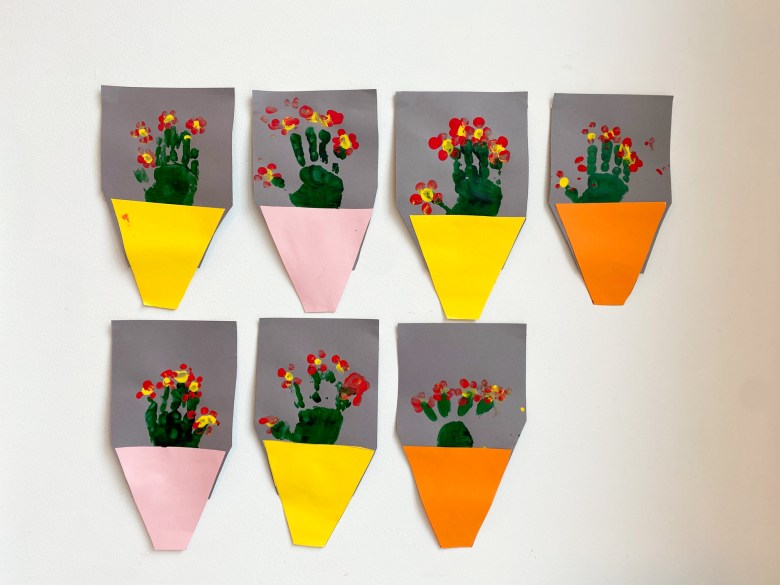
I ran this theory by Ullmann as we drove to one of his kindergartens. I told him some of the things I worry about with my own children: If I hear sirens near my child’s school, is it America’s next school shooting? If I’m at a concert or mall, where will I hide my child if someone opens fire? Do Norwegians ever worry about those things?
Ullmann was so horrified, he missed the exit on the freeway. “That’s really very sad,” he said sympathetically, glancing at me as he took the next exit, crossed over the highway and headed back in the opposite direction.
To be sure, aspects of Norway’s kindergarten system are still being developed, and the country must adapt as its population becomes more diverse. Its first step was expanding access, experts told me. Between 2003 and 2018, the percentage of children ages 1 to 5 attending kindergarten increased from 69 percent to 92 percent. Now, the country is focusing on improving quality and targeting children who are behind in language development.
When it comes to kindergartens, “we’ve known for some time that the quality varies,” said Veslemøy Rydland, a professor at the University of Oslo and one of the lead researchers for the Oslo Early Education Study, a research project into multiethnic early childhood programs that was launched in 2021. Despite standardized requirements, finding staff for lower-income kindergartens, where turnover rates are higher, can be difficult.
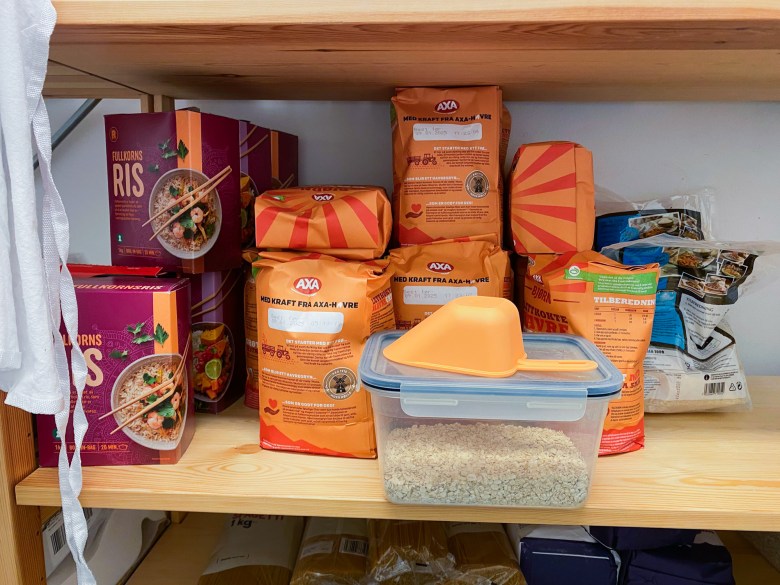
As kindergartens have developed a stronger footing, the country is contending with a changing demographic and growing social inequality, testing its devotion to equity and progressive social values. Kindergartens are seeing this firsthand. Over the past decade, the number of “minority-language” children, kids with two parents who speak a language that is not native to the Scandinavian countries or English, has nearly doubled. Almost 20 percent of children in kindergarten primarily speak a language other than Norwegian, and in some cities as many as 35 percent of children are minority-language speakers. During the past decade, child poverty rates rose.
Part of my goal in visiting Norway was to see how, and if, the country’s system and approach to child care has been able to meet the growing needs of more diverse children. Not all of Norway’s early childhood researchers are convinced that the country’s informal approach to learning works as its demographics evolve.
“This pedagogy has been doing a great job in protecting childhoods … and giving children the opportunity to explore,” said Rydland, At the same time, Rydland said when children have that much freedom, they may not be exposed to activities that could be beneficial, like whole-group reading, simply because they aren’t interested in them. “That might be the same children that are not exposed to shared reading at home,” Rydland said. “That’s the challenge with this pedagogy … I think it works better in a more homogenous society than what we have now, with much more social differences.”
Related: For preschoolers after the pandemic, more states say: Learn outdoors
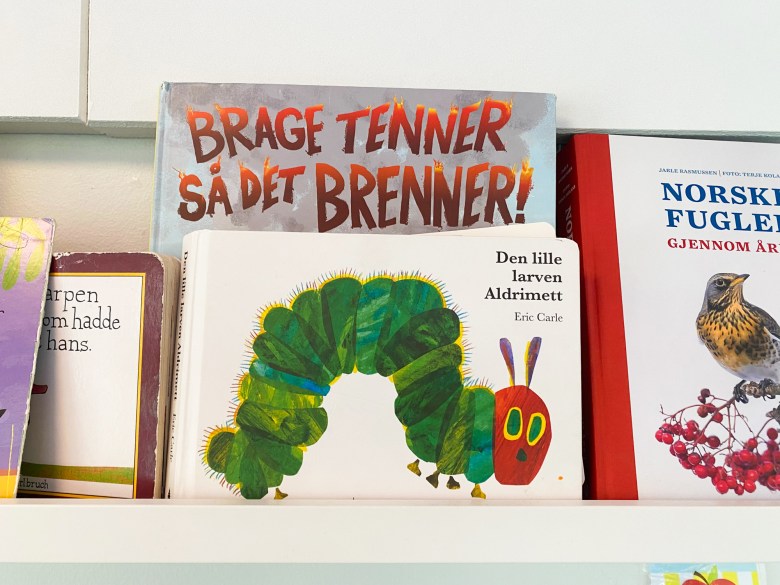
There have been efforts to find a middle ground between the playful freedom inherent to Norwegian kindergartens and a more structured setting.
In Oslo, Rydland leads Språksterk, an initiative run by the University of Oslo, kindergartens in five Oslo districts and officials with the city of Oslo. The project, which roughly translates to “strong language skills” in English, is funded by the city and the Research Council of Norway and is aimed at improving adult interactions with children and ultimately enhancing language development. It’s one of several special projects and interventions in Oslo targeting children and families who are the most in need.
Like many Norwegian initiatives, Språksterk aims to “try to make the social inequalities less,” said Helene Holbæk, who develops projects for children in the Bjerke borough.
Grønland Torg is one of 80 kindergartens participating in Språksterk to help a growing number of immigrant children master the Norwegian language. Fifty-nine children attend Grønland Torg, and they altogether speak 40 different languages.
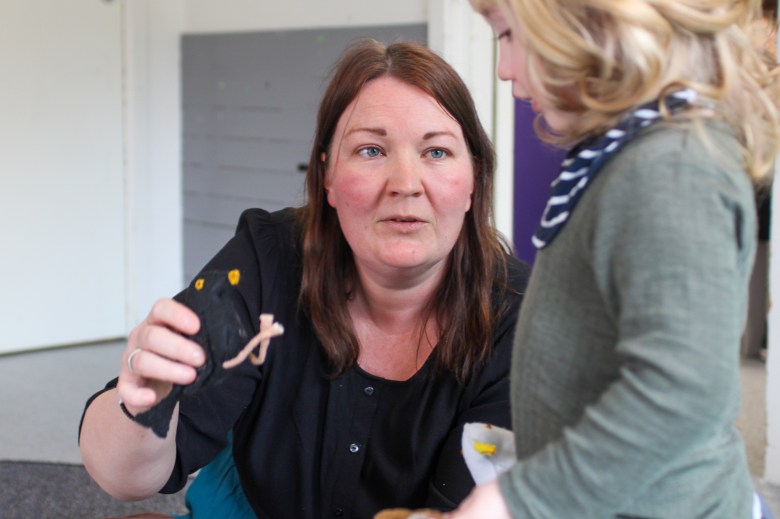
On a spring afternoon, teacher Hilde Sandnes sat on the floor of her room for 1-year-olds, next to a small cardboard box shaped like a birdhouse, as 11 children lumbered around the room, some playing alone while others interacted with the room’s two other teachers. Sandnes invited a toddler near her to come look at a collection of small, felt stuffed animals shaped like birds stacked inside the cardboard birdhouse, which had been sewn by her mother for the bird unit the children were embarking on. A child reached inside and pulled out a duck, proudly naming it in Norwegian.
Sandes repeated it and pulled out another bird, waiting to see if the child could identify it.
“Stork!” he proclaimed, a word that is the same in both English and Norwegian.
The child looked back over at the duck and excitedly proclaimed something in Norwegian.
“He told me the duck is taking a bath,” Sandnes said.
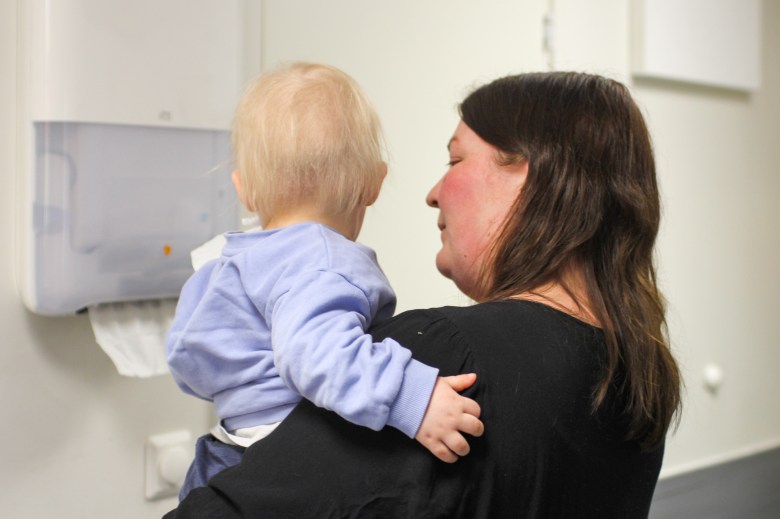
While kindergartens like Grønland Torg are attempting to adapt for immigrants, educators say not all newcomers are sold on the Norwegian model. Children who have immigrated to Norway are eligible to attend kindergarten soon after arriving, and their parents pay the same low rate, or lower, based on income. Educators said families new to Norway who enroll their children often struggle to accept the Norwegian approach to child care, expecting more academics or structure.
Many families choose not to enroll their children at all, an unintended consequence of a generous but divisive social policy in Norway: cash-for-care, which pays parents who stay home with their children. The idea is to support parents who wish to keep their children home longer — toddler enrollment in Norway’s kindergartens is lower than for older age groups — or sustain families if a child can’t get a spot in a kindergarten. Norwegian educators say children new to Norway are the ones who could benefit the most from child care and exposure to Norwegian language, yet are less likely to enroll before the subsidy expires when children turn 3.
At the same time, kindergartens are reckoning with how to support a steady rise in children with disabilities. Seventy percent of the country’s programs enroll children who qualify for special education support.
As these needs have grown, Oslo has responded with sufficient funding, educators told me. For students with disabilities, the city pays for and sends in specialists for added support. While these services are required for children under Norwegian law, national experts said the quality and extent of services can vary by city.
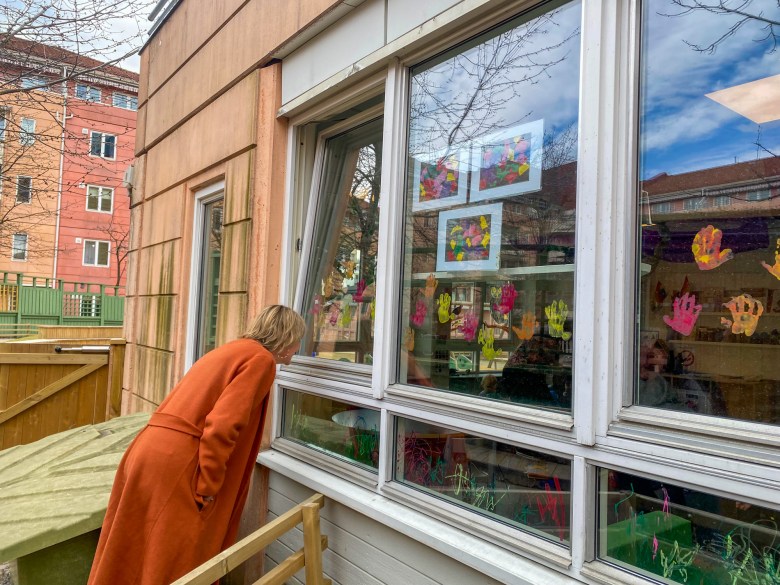
In America, the quality of publicly funded early learning programs is often scrutinized, especially in the pre-K years. I wondered how the Norwegian government makes sure all this public money is in fact leading to high-quality kindergartens that are adequately serving children.
While there is copious federal tracking of staffing numbers as well as quality and parent satisfaction metrics, Norwegians are skeptical of monitoring and measuring children’s development and do not focus much on the cost-benefit argument around early education. Norwegians largely see early childhood programs as a good that “leads to more equal and happy childhoods,” said Zachrisson from the University of Oslo. “This is what the public discourse is about,” he added. The value of Norway’s early childhood services is not contingent on long-term effects.
Elise Kristin Hagen Steffensen, director of Barnebo Barnehage in north Oslo, described a system based on trust. Programs report issues to their municipality as small as forgetting to lock a window or as big as teacher mistreatment of children. Hagen Steffensen regularly writes reports for the city to explain how her school is meeting various parts of the law’s requirements, and officials may visit, especially if they’ve heard a kindergarten is struggling. There is also copious federal tracking of staffing numbers as well as quality and parent satisfaction metrics. Programs failing to meet regulations face no fines, however; educators were somewhat confused when I asked about penalties for failing to meet regulations, as can be the norm in America. Instead, they told me, local kindergarten officials help programs improve.
“That approach is just the Norwegian model,” said Hagen Steffensen. “I like that very much.”
This sense of trust seemed so inherent to Norwegians that they were baffled that I was asking questions about it. One afternoon, as Frivik, head of kindergartens in Bjerke borough, walked me to a bus stop, she pointed out how fences are few and far between in Norway. The country’s “right to roam” law allows individuals to freely and responsibly enjoy “uncultivated” areas, regardless of who owns them. I mentioned that fit right in with the level of trust I discovered, both by the government toward residents and residents toward the government.
“Nobody regularly checks or scans my Metro ticket to make sure I paid,” I pointed out.
“Why wouldn’t you pay?” Frivik asked me.
Looking forward, Norway’s early educators and experts aren’t quite ready to declare success in building their system, especially as demographics change. They want to see higher quality across kindergartens and more teachers in the classroom to reduce student-teacher ratios, which are already low by American standards.
Ullmann, too, thinks there is still room for improvement. “If you take the money and the structural quality that we offer in Norway, yeah, compared to every other country in the world, these are more or less the most expensive kindergartens in the world,” Ullmann said. “It’s fantastic when you compare it to every other country.” But, he added, even that may not be enough when it comes to the youngest of children, on whom the future rests.
Contact staff writer Jackie Mader at (212) 678-3562 or mader@hechingerreport.org.
This story about Norwegian children was produced by The Hechinger Report, a nonprofit, independent news organization focused on inequality and innovation in education, with support from the Spencer Fellowship at Columbia Journalism School. Sign up for the Hechinger newsletter.



